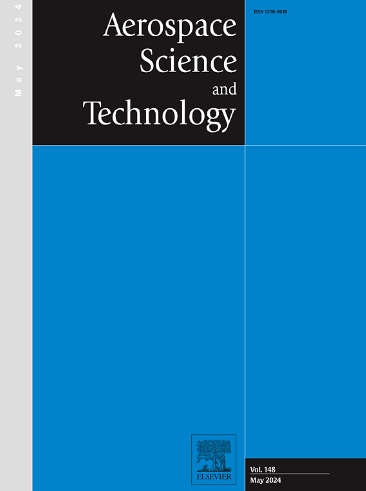飞机发动机燃烧器新型涡流控制焰座初探
IF 5
1区 工程技术
Q1 ENGINEERING, AEROSPACE
引用次数: 0
摘要
本研究提出了一种新型涡流控制焰座(VCF),用于提高先进航空发动机的燃烧性能,特别是在各种工作条件下后燃器的贫燃和喷出特性。此外,还进行了实验和数值研究,以探索空腔结构对焰室流场、贫燃点火、贫喷、火焰传播特性和出口温升分布的影响。研究了封闭式(case-1)和开放式(case-2)两种不同的空腔结构,结果表明,case-1 和 case-2 都能在空腔内产生大尺度的涡流结构,有助于实现出色的燃烧稳定性。与情况-1 相比,情况-2 表现出更好的贫燃和喷发性能。此外,案例-1 和案例-2 的点火过程相同,都包括四个不同的阶段:第 1 阶段涉及有效焰核的形成;第 2 阶段与焰核点燃整个空腔有关;第 3 阶段代表火焰在空腔下游的全面发展;第 4 阶段描述了固定火焰前沿的火龙卷的形成。有趣的是,在低燃料空气比(FAR)条件下,案例 1 的出口温升低于案例 2。随着燃料空气比的增加,两种情况下的出口温升差异逐渐缩小。本文章由计算机程序翻译,如有差异,请以英文原文为准。
A preliminary investigation on a novel vortex-controlled flameholder for aircraft engine combustor
This study proposes a novel vortex-controlled flameholder (VCF) to enhance the combustion performance, particularly the lean ignition and blowout characteristics of afterburners in advanced aircraft engines across a wide range of operating conditions. Additionally, both experimental and numerical investigations were conducted to explore the effects of the cavity structure on the flow field, lean ignition, lean blowout, flame propagation characteristics, and outlet temperature rise distribution of the flameholder. Two distinct cavity structures designated closed-cavity (case-1) and open-cavity (case-2) were examined, the findings indicating that both case-1 and case-2 can generate large-scale vortex flow structures within the cavity, contributing to achieving excellent combustion stability. Case-2 demonstrated better lean ignition and blowout performance compared to case-1. Furthermore, both case-1 and case-2 exhibited the same ignition process, which comprised four distinct phases: Phase 1 involved the formation of an effective flame kernel; Phase 2 pertained to the ignition of the entire cavity by the flame kernel; Phase 3 represented the full development of the flame downstream of the cavity; Phase 4 described the formation of a fire tornado that anchors the flame front. Interestingly, the outlet temperature rise in case-1 is lower than that in case-2 at low fuel-to-air ratio (FAR) conditions. As the FAR increases, the difference in the outlet temperature rises between the two cases gradually narrows.
求助全文
通过发布文献求助,成功后即可免费获取论文全文。
去求助
来源期刊

Aerospace Science and Technology
工程技术-工程:宇航
CiteScore
10.30
自引率
28.60%
发文量
654
审稿时长
54 days
期刊介绍:
Aerospace Science and Technology publishes articles of outstanding scientific quality. Each article is reviewed by two referees. The journal welcomes papers from a wide range of countries. This journal publishes original papers, review articles and short communications related to all fields of aerospace research, fundamental and applied, potential applications of which are clearly related to:
• The design and the manufacture of aircraft, helicopters, missiles, launchers and satellites
• The control of their environment
• The study of various systems they are involved in, as supports or as targets.
Authors are invited to submit papers on new advances in the following topics to aerospace applications:
• Fluid dynamics
• Energetics and propulsion
• Materials and structures
• Flight mechanics
• Navigation, guidance and control
• Acoustics
• Optics
• Electromagnetism and radar
• Signal and image processing
• Information processing
• Data fusion
• Decision aid
• Human behaviour
• Robotics and intelligent systems
• Complex system engineering.
Etc.
 求助内容:
求助内容: 应助结果提醒方式:
应助结果提醒方式:


